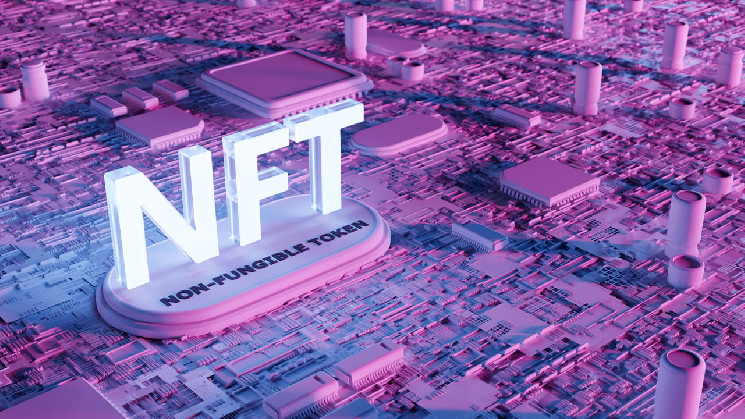NFT
According to Tony Tran, the chairman and CEO of Peer Inc, the cooling interest in non-fungible tokens (NFTs) and the metaverse, particularly by companies and tech giants like Meta, does not spell the end, but “reflects the natural cycle of innovation’. .” In written responses to questions from Bitcoin.com News, Tran, whose company is behind the 3D social networking app Peer, emphasized that such a downward trend is often experienced by early adopters of new technologies.
Ignorance is a major barrier to mass adoption
Tran also attributed the public’s seemingly limited interest in NFTs to ignorance and their lack of “tangible utility”. However, Tran also argued that these barriers could be overcome by “better educating the public about the value of digital property and the broad potential applications for NFTs.”
Regarding the sudden rise in Bitcoin tracking popularity, Tran said while he appreciates the debate, his focus is “less on a binary ‘yes or no’ to Bitcoin NFTs, and more on how we can use blockchain technology to create value. offer to people.” The CEO also told Bitcoin.com News that he believes the metaverse could be “the beginning of a new era of digital interactions.”
Below are Tran’s detailed answers to each of the questions sent to him via Telegram.
Bitcoin.com News (BCN): What do you think are the biggest obstacles to the mass adoption of NFTs and what needs to be done to make them more valuable in our daily lives?
Tony Tran (TT): There are two main issues, education and utility. Many people still don’t understand what NFTs are or why they should care. We need to better educate the public about the value of digital property and the broad potential applications of NFTs. Next, we need to develop platforms and systems where NFTs have a real, tangible use – beyond just digital collectibles and art. We envision NFTs playing a major role in content creation, gaming, and social interactions in the digital world.
BCN: Your company is building an augmented reality based Web3 social app that is said to superimpose a social network on the real world. What does it offer that the existing social networks Web2 and Web3 don’t and how would it facilitate interactions between users to bring people and content to the metaverse?
TT: Our goal with the Peer social app is to break down the barriers between the digital and physical world. Existing Web2 networks largely operate within the constraints of the traditional Internet, while many Web3 networks focus exclusively on the digital domain. Our app brings these two worlds together, allowing users to interact with both physical and digital elements at the same time. For example, imagine being able to place a digital artwork in a real location for others to discover and interact with. This kind of user-generated content and experience is a new frontier in social networks.
BCN: In 2022, many traditional business organizations embraced NFTs and the metaverse, but in 2023, fewer companies are doing so. Meta, one of the first major tech companies to embrace the metaverse, has essentially shelved or ditched it. What does this mean for platforms like Peer that are still under construction?
TT: The recent withdrawal by companies and technology giants such as Meta does not spell the end of the metaverse or NFTs, but rather reflects the natural cycle of innovation. It’s not uncommon for early adopters to face challenges exploring new technologies, leading to a temporary slowdown or change of direction.
That said, at Peer we see this as an opportunity. As an agile and innovative company, we are well positioned to adapt to the evolving landscape and continue our drive to bring NFTs and the metaverse to the mainstream. We believe that the potential of these technologies remains huge and largely untapped.
BCN: Building a digital, gamified layer on top of the real world would probably require Geo-NFTs. Can you tell us how the Geo-NFTs work and if it is possible to prevent malicious parties from spoofing their location to access these NFTs?
TT: Geo-NFTs associate geographic locations in the real world with unique digital assets. They form the bridge between physical location and digital ownership. Of course, the issue of location spoofing is a big one. However, by using advanced location verification techniques and integrating them with blockchain security measures, we can largely prevent malicious activity. Our main priority is to ensure a safe, fair and enjoyable experience for all users.
BCN: The Bitcoin Ordinals NFTs have captured the collective mindshare of NFT lovers and haters alike. Some argue that it goes against Satoshi’s original view of Bitcoin being a peer-to-peer payment system. Others believe Bitcoin must embrace innovation to stay at the top of the crypto pyramid. What is your opinion about this?
TT: While I appreciate the debate, my focus is less on a binary yes or no to Bitcoin NFTs, and more on how we can use blockchain technology to provide value to people. Whether that’s through Bitcoin, Ethereum or any other platform, I think the most important thing is that we push boundaries and explore what’s possible.
BCN: Do you think the metaverse will be the pinnacle of our digital interactions or is it a harbinger of something more sophisticated and immersive?
TT: I believe the metaverse is just the beginning of a new age of digital interactions. Imagine a world where, rather than being constrained by physical geography or conventional interfaces, we can communicate, work and play in a shared digital space. A world where digital art is valued as much as physical art, where virtual concerts are as well attended as physical ones, and where work and play go together seamlessly. I believe our future interactions will be much more dynamic, immersive and personal than we can imagine today. And NFTs, I think, will play a critical role in making this happen.

